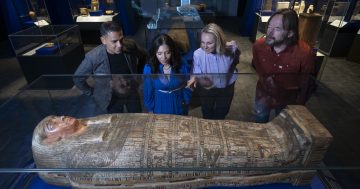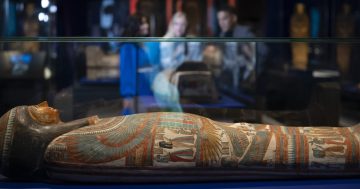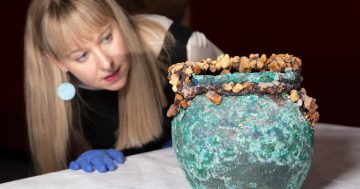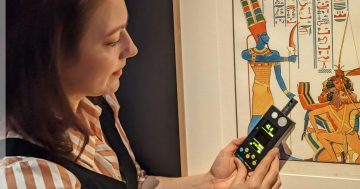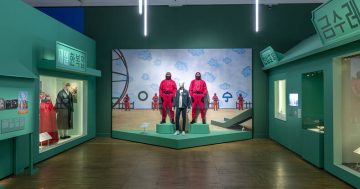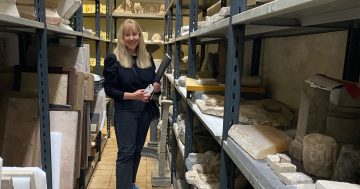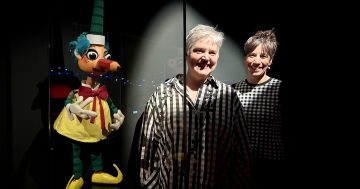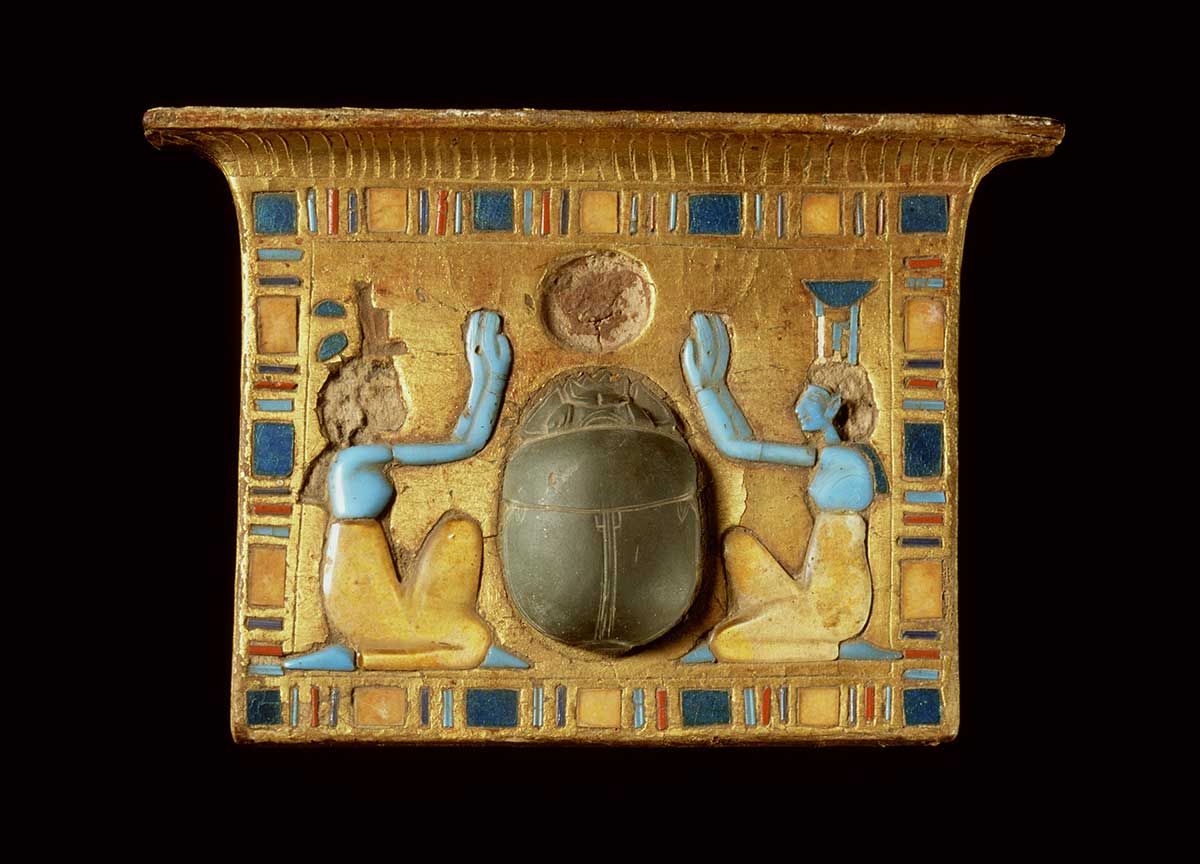
A pectoral ornament from ancient Egyptian tombware. Photo: Supplied.
Ancient Egypt has always been a popular drawcard for blockbuster exhibitions. In Australia, we are now experiencing a glut of Ancient Egypt shows.
Sandwiched between the spectacular Ramses and the gold of the pharaohs that has opened at the Australia Museum in Sydney and the huge 500-item Pharaoh exhibition from the British Museum at the NGV that will open next year in Melbourne is the National Museum’s Discovering Ancient Egypt.
The Sydney show draws on collections from Egypt and focuses on the rule of the great pharaoh, Ramses II, with a range of tomb art and the golden treasures from the tomb of Ramses. The Melbourne show will be a survey of some of the great gems of the British Museum’s outstanding Egyptian holdings.
The Canberra show is unusual, as its 220 objects are all drawn from the Dutch National Museum of Antiquities (Rijksmuseum van Oudheden) in Leiden, and are generally not particularly well known.
It is a touring show that has been to Japan, South Korea and Perth and has been reconfigured for its display at the National Museum before it concludes its tour in Brisbane.
It is a strong exhibition with no shortage of glittering highlights, including 10 painted coffins, delicately carved sculptures, some Book of the Dead scrolls, canopic jars, exquisite jewellery and objects of everyday use, including a boardgame, stone knives and a mummification hook.
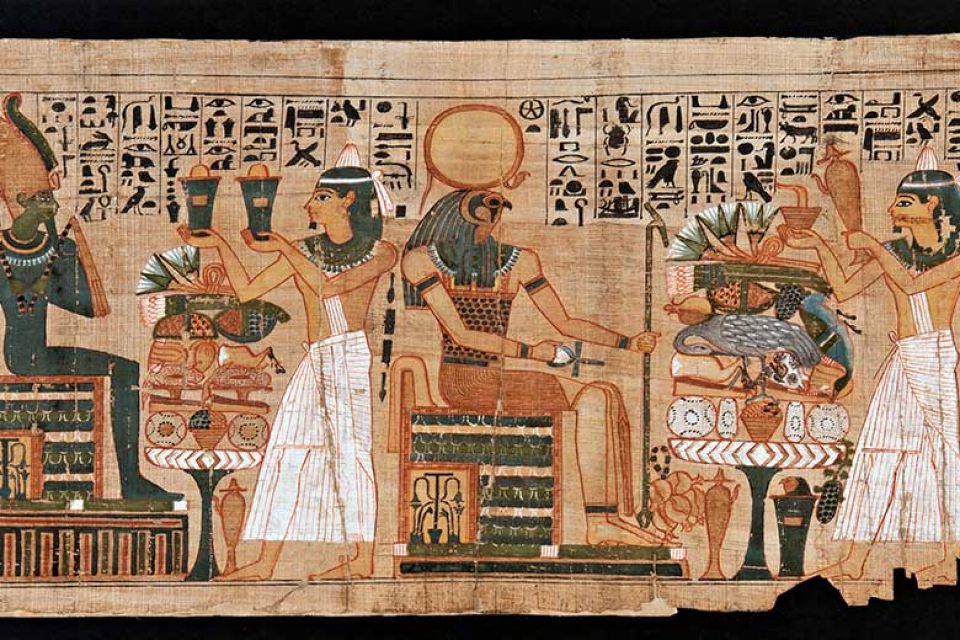
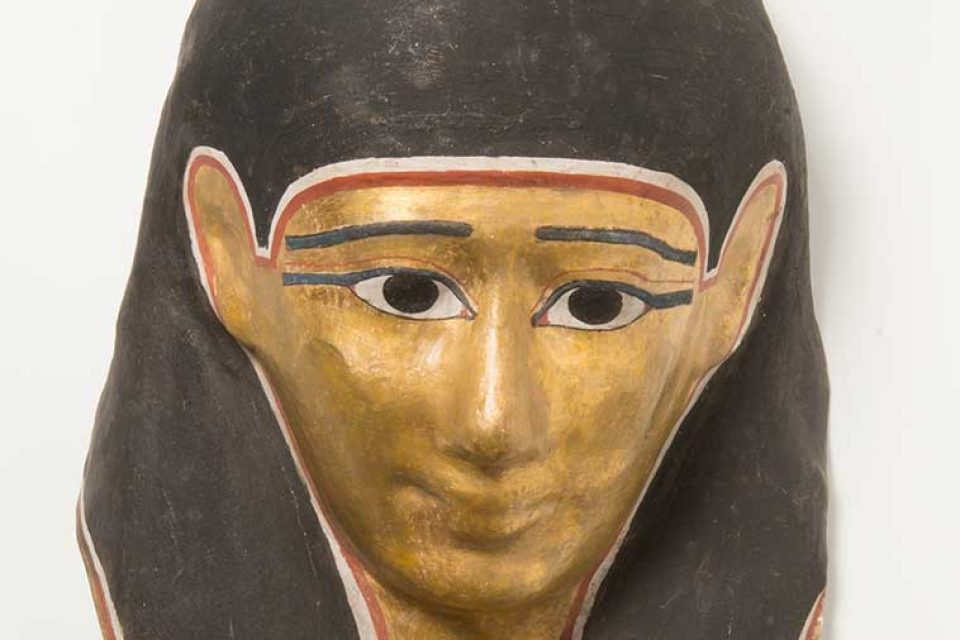
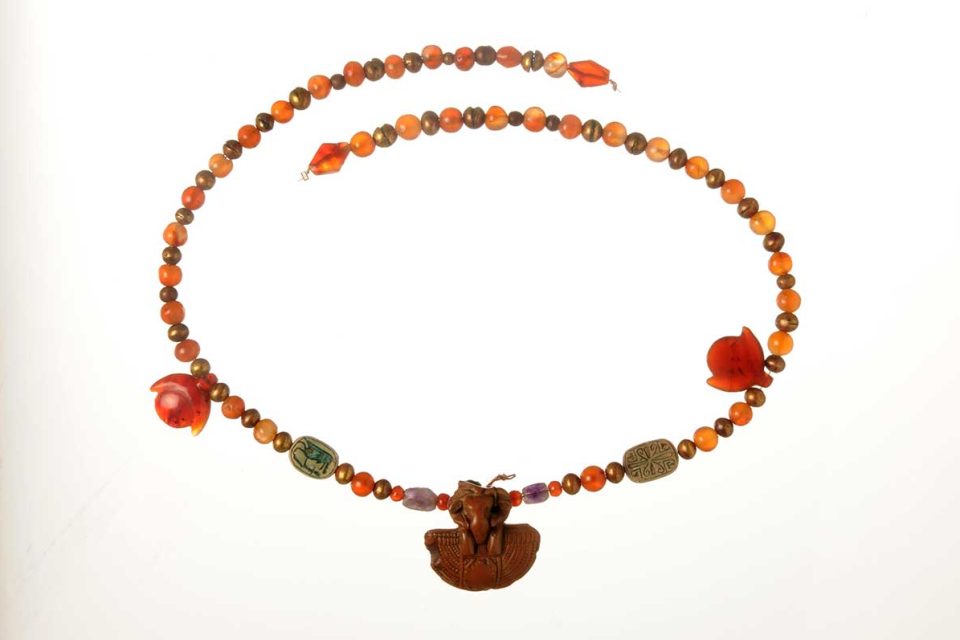
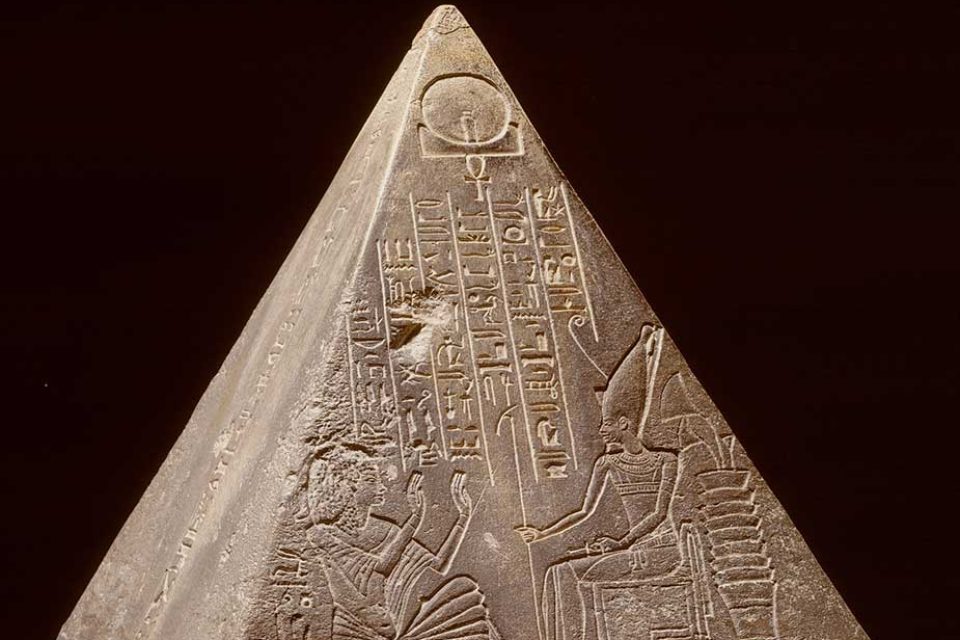
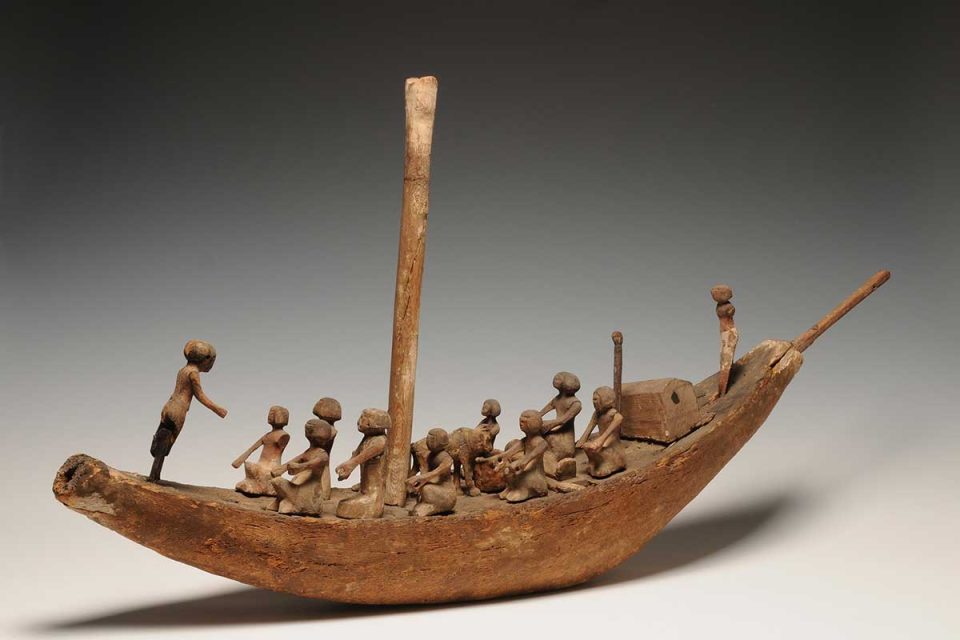
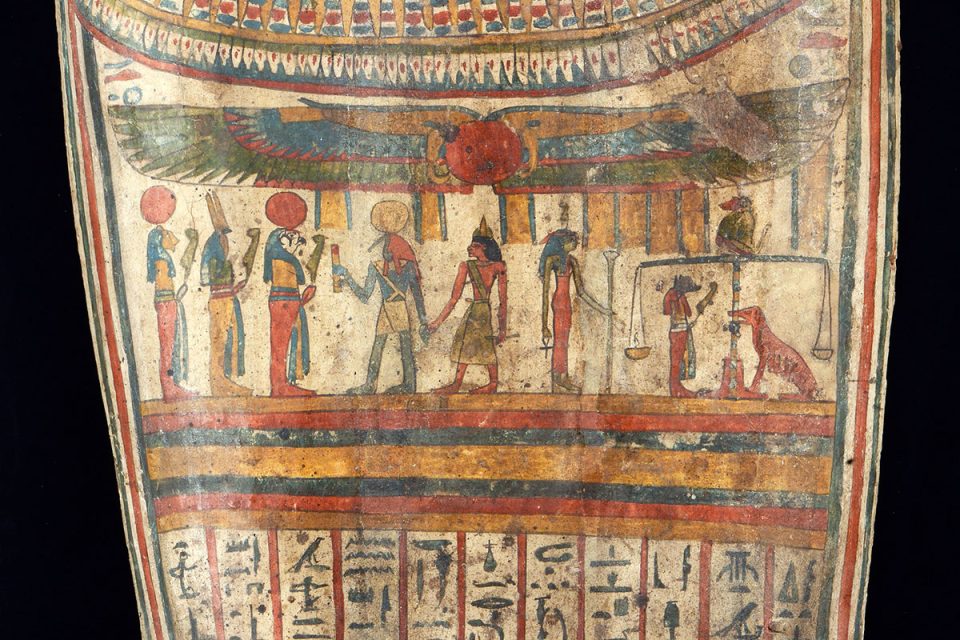
There is also a chapel-like room at the back of the exhibition that contains five mummified bodies wrapped in linen.
I appreciate that these will be crowd pleasers and selfie magnets and will attract the gaze of the curious as shrunken heads and the remains of ‘primitive peoples’ did in the past. Personally, I feel uncomfortable at this intrusion into a private death ritual – the desire to view a wrapped corpse.
Obviously, the elaborately painted outer coffins, funerary masks and even the sombre but beautiful canopic jars that contained entrails of the deceased and the various tomb goods assembled to assist the deceased in their afterlife seem like legitimate museum exhibitions.
A wrapped human body in plain linen bandages is not an object of aesthetic beauty but is simply there as a morbid curiosity and I would hope that these Egyptian ancestors who died almost 3000 years ago would be finally allowed to rest.
Mummies may have been objectified by museums and it was primarily white collectors and archaeologists who brought to Europe and America hundreds of mummies in the 19th and early 20th centuries.
There were so many mummies in circulation in Europe that a special pigment was produced for painting from ground-up mummies called Mummy Brown, a particular favourite with the Pre-Raphaelites. Would viewers feel more squeamish if their immediate ancestors were put on display in a museum?
Perhaps we may reach a stage when we could argue that human remains should not be the subject of museum display, unless special consent was provided by people before they passed over to the other side of life.
Discovering Ancient Egypt is an exhibition of unexpected delights, whether it be the exquisite family Stela of Huy, the monumental free-standing Isis, the sculptor self-portrait Naos-Stelae of Pagerger or some of the magnificent papyrus paintings.
Very few Australians would have seen any of these pieces before, and they are beautifully displayed within an atmosphere that evokes ancient mystery and yet is steeped in scholarship.
In some ways, this is a scholarly and pedagogical display where, within a chronological framework, we are introduced to some of the main belief systems of Ancient Egypt and trace aspects of its reception in Europe.
If not as spectacular as some of the earlier shows at this museum, it is an engrossing show that will seduce and inspire the visitor.
On a sad note, this is the final show at the National Museum of Australia under the stewardship of Matthew Trinca, who after 10 years as director and 20 years at the museum, is now retiring. Next year, Dr Trinca will move up the road to accept a research position at the ANU.
Discovering Ancient Egypt is at the National Museum of Australia in Canberra from 15 December 2023 to 8 September 2024. Tickets are $25 for adults, $12.50 for children under 16 and $20 for concessions. Children under 4 are free.
Sasha Grishin is an art historian and critic.
Original Article published by Sasha Grishin on Riotact.


